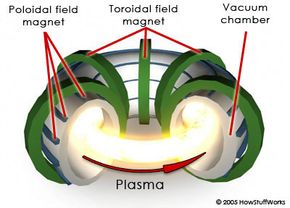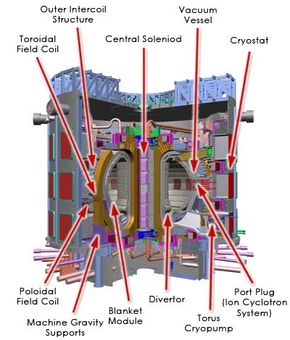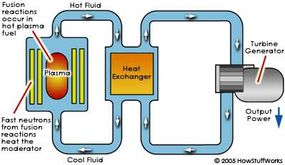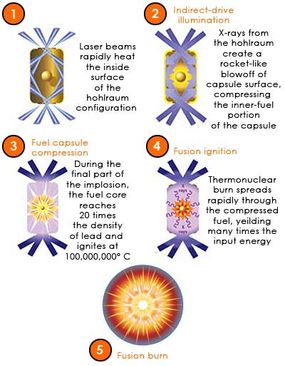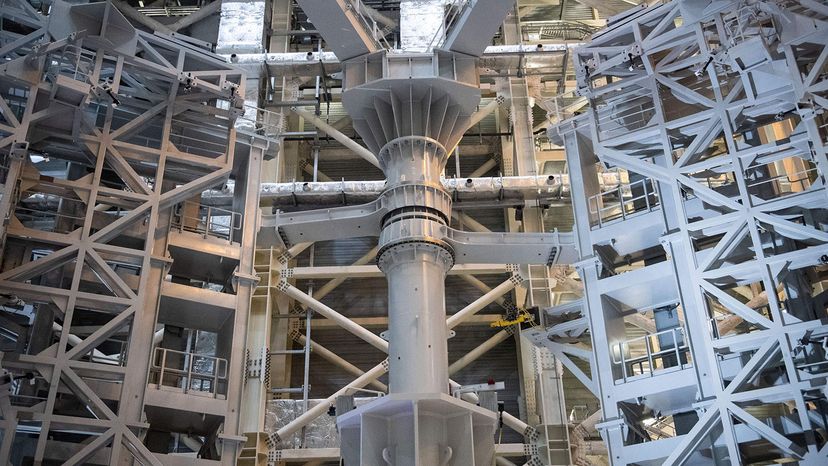
Back in 1925, British astrophysicist Arthur Eddington published a paper in which he theorized that stars such as the sun are powered by fusion reactions, in which hydrogen nuclei are combined to form helium. By the 1950s, scientists had begun to contemplate how that process might be used by humanity to generate abundant amounts of energy [source: Arnoux].
Since then, fusion's potential has continued to dazzle visionaries. A single gram of the hydrogen isotopes needed for a fusion reaction could generate as much energy as 11 tons (nearly 10 metric tons) of coal [source: Clynes]. And unlike a conventional nuclear reactor that utilizes a fission reaction, in which uranium atoms are split, a power plant with a fusion reactor wouldn't produce a lot of radioactive waste. (Its byproduct would be helium, an inert gas.) It also would be much safer, because fusion energy production wouldn't be based upon a chain reaction, so it couldn't go out of control and have a meltdown [source: IAEA].
Advertisement
Even so, fusion energy has long remained an elusive vision for the future, in large part because it's complicated and difficult to artificially duplicate the furnaces that power stars on Earth, without expending more energy than the process generates. Extreme temperatures and pressures are needed to overcome the forces that normally repel hydrogen atoms, and instead get them to combine their nuclei [source: Valich].
That said, scientists have made significant progress in recent years toward making fusion an eventual reality. "Most of the key physics questions behind fusion have been answered," Thomas Overton wrote in a 2020 article in Power, an energy sector publication. In 2010, a consortium of nations that includes the U.S., China, the European Union, India, Russia, Japan and Korea began building ITER, a facility that is scheduled to be sufficiently complete to begin "first plasma" testing in 2025. If all goes well, ITER could be demonstrating the ability to generate 10 times as much energy as it requires by the mid-2030s. While ITER won't generate electricity, it could pave the way for future fusion plants that will [source: ITER].
In this article, we'll learn about nuclear fusion and see how the ITER reactor will work.
